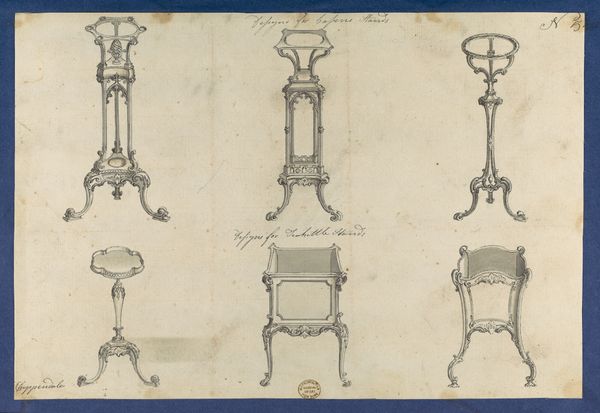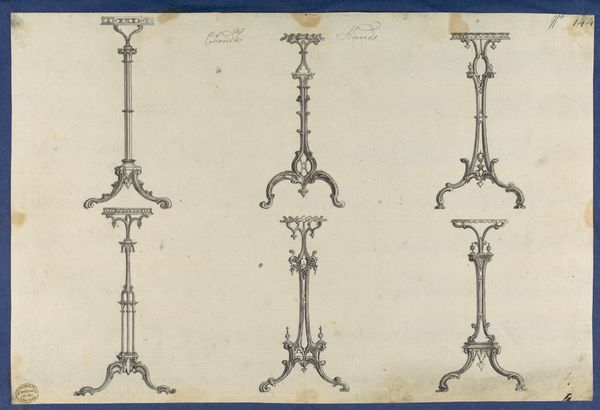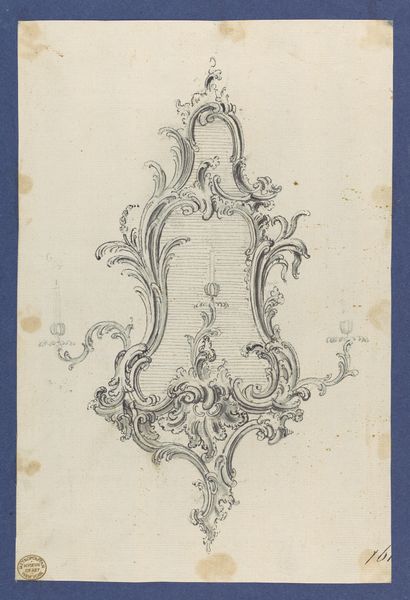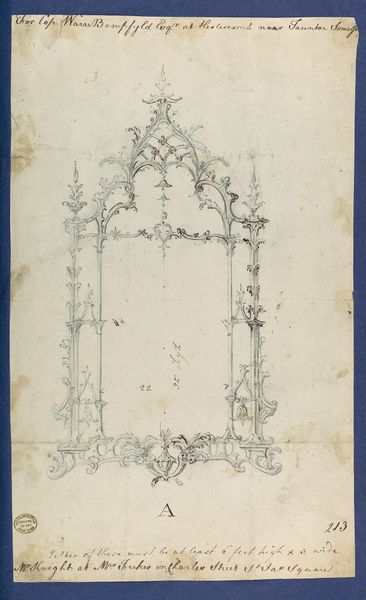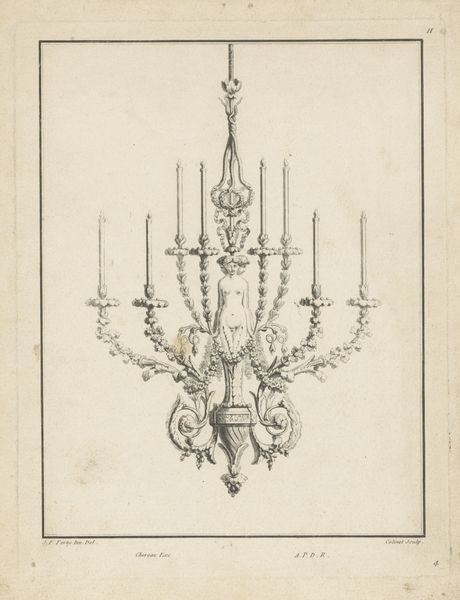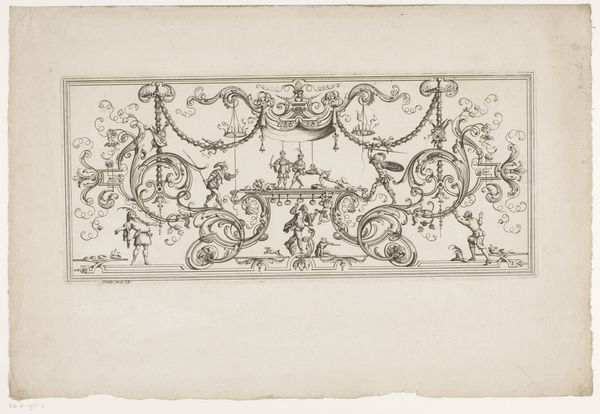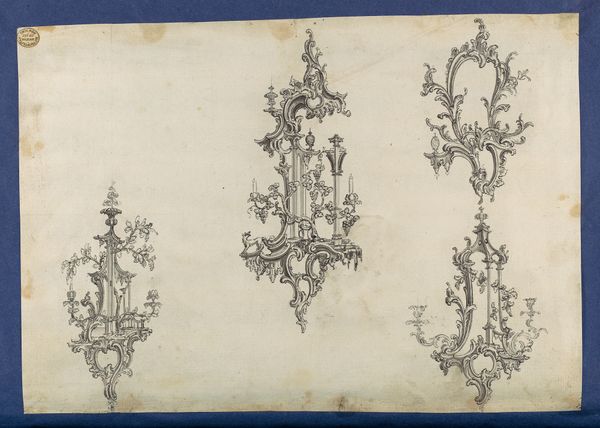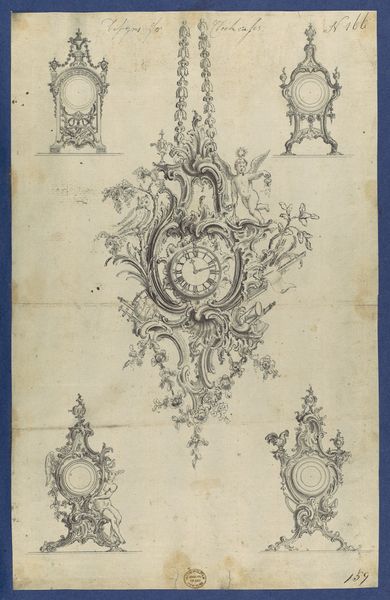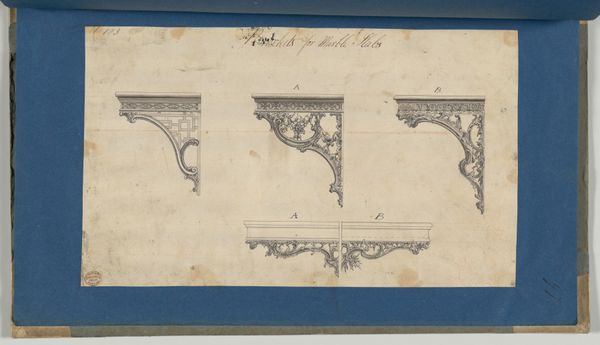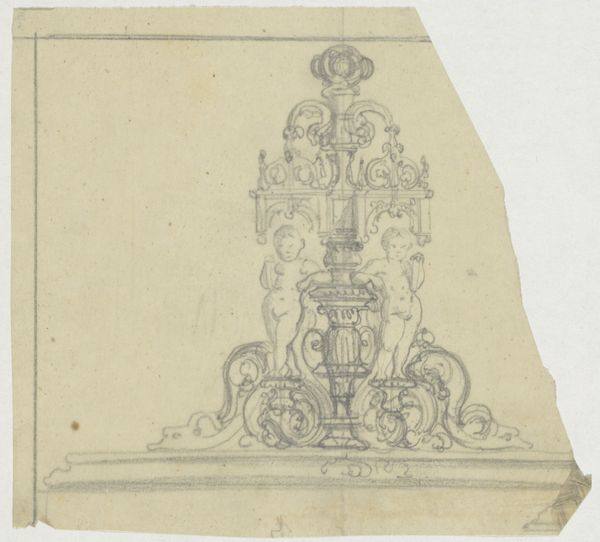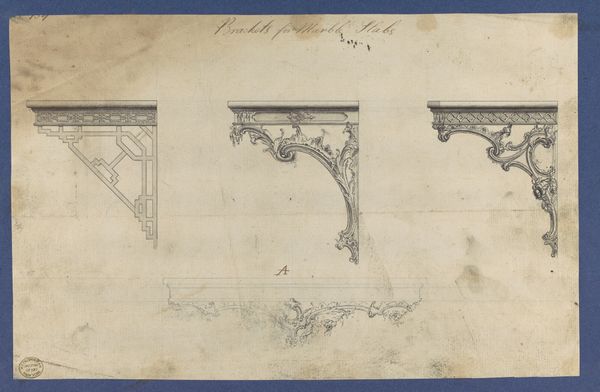
Candle Stands, in Chippendale Drawings, Vol. I 1753
0:00
0:00
drawing, print, paper, pencil
#
drawing
#
neoclacissism
# print
#
paper
#
coloured pencil
#
geometric
#
pencil
#
line
#
sketchbook drawing
#
history-painting
#
decorative-art
Dimensions: sheet: 8 1/4 x 13 in. (21 x 33.1 cm)
Copyright: Public Domain
Editor: This is Thomas Chippendale's "Candle Stands, in Chippendale Drawings, Vol. I," from 1753. It’s a drawing, likely pencil and print on paper, showcasing three different candlestick designs. They feel incredibly ornate and give a glimpse into the aesthetics of the time. What does this piece communicate to you? Curator: It speaks volumes about the intersection of art, craft, and social status in 18th-century England. Chippendale was more than just a furniture maker; he was a tastemaker. These drawings weren't just sketches; they were part of a catalogue, a sales tool designed to appeal to a burgeoning middle class eager to emulate aristocratic tastes. How do you think designs like these affected domestic life at the time? Editor: I imagine it created a kind of aspirational culture, influencing how people decorated and presented their homes, even if they couldn't afford the most elaborate versions. Did Chippendale directly make all these pieces? Curator: Probably not himself. His workshop employed many artisans. Chippendale was the creative director, so to speak, establishing a visual brand, which made his work highly sought after. He tapped into the desire for neoclassical elegance. How do you see that reflected in the drawings themselves? Editor: Well, I see a lot of symmetry and balance, with those delicate, curving lines that suggest classical motifs, but also feel incredibly unique. It shows how design became another method for a rising merchant class to publicly display its economic accomplishments. Curator: Precisely. And it shows how objects within the domestic sphere became politicized through displays of economic means. It's not just about beauty; it's about social positioning and solidifying cultural norms. Editor: I never thought of furniture design as a way of understanding societal power dynamics! Thanks for broadening my perspective on this. Curator: My pleasure! Considering design as an influencer and tangible form of cultural ideas gives us insights into the politics of everyday life.
Comments
No comments
Be the first to comment and join the conversation on the ultimate creative platform.
